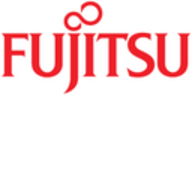

HPE Synergy and Fujitsu Primergy BX400 Series compete in the composable infrastructure market. HPE Synergy has an advantage in customer satisfaction, particularly in pricing and support, while Fujitsu Primergy BX400 Series is preferred for its robust features, indicating a higher value proposition.
Features: HPE Synergy offers a highly adaptable infrastructure, suitable for mixed workloads with dynamic scalability. It is designed to efficiently manage diverse IT environments. Fujitsu Primergy BX400 Series stands out with its energy efficiency and comprehensive integrated management capabilities. It also provides enhanced reliability, though it may require more customization during setup.
Ease of Deployment and Customer Service: HPE Synergy is known for straightforward deployment, featuring streamlined processes that facilitate a quicker setup. Its customer service is highly rated due to responsive support. Fujitsu Primergy BX400 Series has a more complex deployment process but is backed by equally responsive customer service, which helps offset the intricacy of its setup, appealing to businesses that need detailed guidance.
Pricing and ROI: HPE Synergy is viewed as a cost-effective option, offering a quick ROI with its lower initial setup costs. It appeals to budget-conscious organizations. In contrast, Fujitsu Primergy BX400 Series requires a higher initial investment but promises long-term value with its superior performance and durability. It suits enterprises focused on sustaining infrastructure resilience over time.
| Product | Market Share (%) |
|---|---|
| HPE Synergy | 18.8% |
| Fujitsu Primergy BX400 Series | 0.8% |
| Other | 80.4% |


| Company Size | Count |
|---|---|
| Small Business | 30 |
| Midsize Enterprise | 15 |
| Large Enterprise | 56 |
Managing large computing and storage requirements with limited resources, budgets and space is a challenge. The Fujitsu Server PRIMERGY BX400 helps to solve it. It is a fully-featured blade system built from the ground up as a user-friendly and versatile IT infrastructure. Up to eight server and storage blades are all packed into a surprisingly small enclosure that is as easy to install and manage as it is to use.
HPE Synergy, the first platform built from the ground up for Composable Infrastructure, offers an experience that empowers IT to create and deliver new value instantly and continuously. It is a single infrastructure that reduces operational complexity for traditional workloads and increases operational velocity for the new breed of applications and services. Through a single interface, HPE Synergy composes physical and virtual compute, storage, and fabric pools into any configuration for any application. As an extensible platform, it easily enables a broad range of applications and operational models such as virtualization, hybrid cloud, and DevOps. With HPE Synergy, IT can become not just the internal service provider but the business partner to rapidly launch new applications that become the business.
We monitor all Blade Servers reviews to prevent fraudulent reviews and keep review quality high. We do not post reviews by company employees or direct competitors. We validate each review for authenticity via cross-reference with LinkedIn, and personal follow-up with the reviewer when necessary.